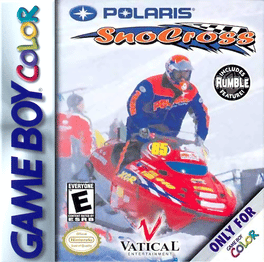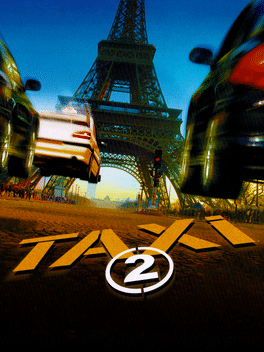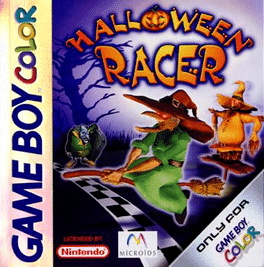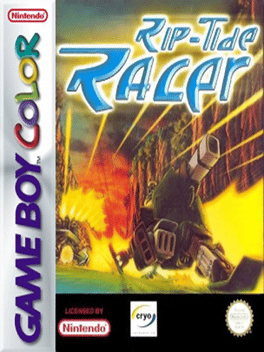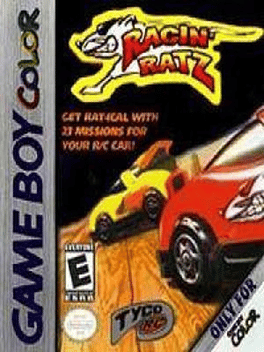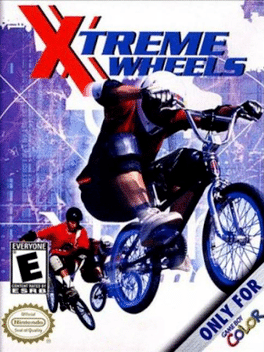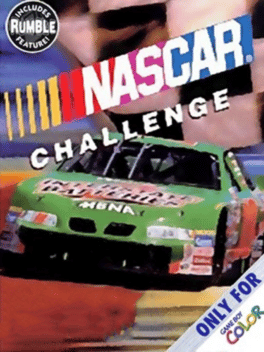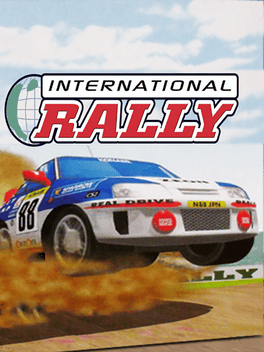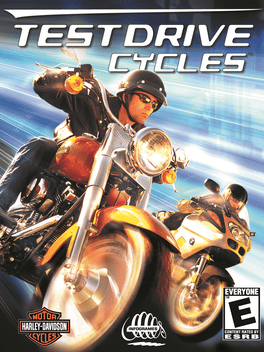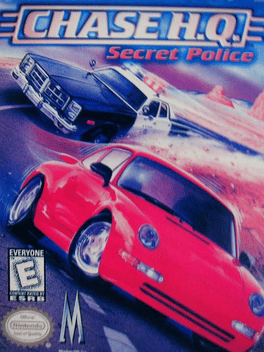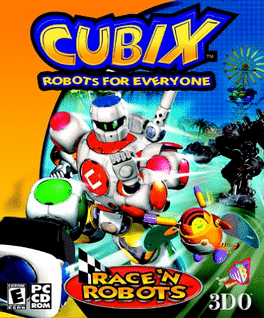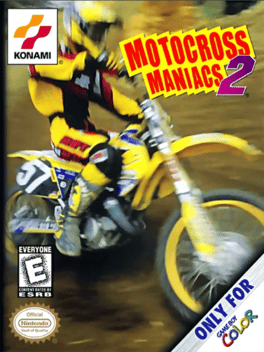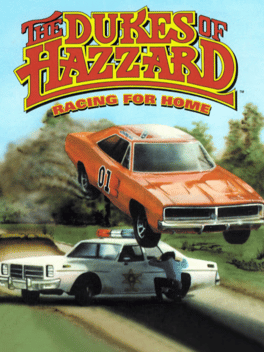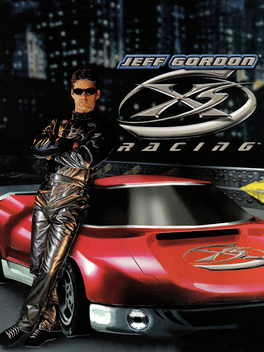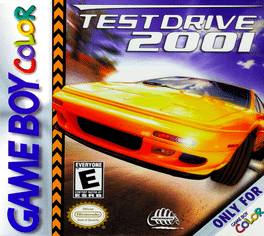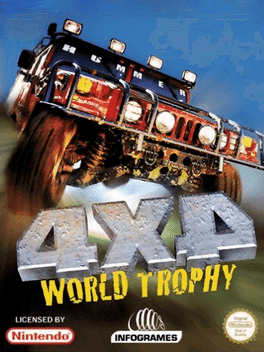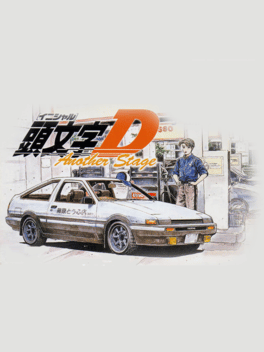Most Popular Racing Games - Page 161
-
SnowCross
2000
SnowCross
2000
Get on a snowmobile and drive your way to victory with SnowCross. Try to master 10 different courses that take you through ovals, twisting bobsled runs, and several treks through the wilderness. When you are ready for some competition, try to win the Tournament Cups, where you will have to take first place from two other racers. After winning, you will be able to upgrade your vehicle before moving on to the next race. With three different Cups to win, there is plenty of racing action. If you get tired of racing computer-controlled opponents, hook up a link cable to challenge your friends to a race. You will become the greatest snowmobiler of all time in SnowCross -
Taxi 2
2000
Taxi 2
2000
Taxi 2 is a driving game, based on Luc Besson's movie. Both movie and video game share the same title. Taxi 2 features two game modes. The "story mode" follows the scenes from the movie and allows you to select from five missions. When a mission is completed, you can save your progress, but also play it in the "arcade mode". In this mode, you will face the same competitor, Jean-Louis Schlesser ! The objective is no longer specific to each mission, but is to win the race, after several laps. In this mode, you will not have to care about the temperature gauge, since it is removed from arcade mode. -
Halloween Racer
1999
-
Rip-Tide Racer
2000
Rip-Tide Racer
2000
Rip-Tide Racer is a Racing game, developed and published by Cryo Interactive, which was released in Europe in 2000. -
Racin' Ratz
2000
Racin' Ratz
2000
A variety of little animals take center stage in this racing challenge that takes you through some unlikely environments. Trek through the living room, Grandma's house, a bedroom, and the garage in your quest for glorious victory. There are 25 missions in all, and the action is spread over 10 huge levels. You choose to play as Chris (a cat) or Betty (a little bird), and then take your character through a slew of puzzles, avoiding hazards and collecting power-ups. Finding the appropriate items will allow you to jump across furniture, shrink your car, or even climb over your obstacles. Smart strategy and quick reflexes will help you unlock an extremely trying boss level where you'll take on either a cat or bird in a head-to-head duel. Sometimes the best things come in small packages, and that's certainly the case in this small-scale racing challenge for the Game Boy Color. -
Xtreme Wheels
2001
Xtreme Wheels
2001
Are you bad enough to handle the best? The world's top BMX racers are ready to take you on, and you have no choice but to answer the call. You'll start at the bottom of the rankings, trying to work your way up the ladder by mastering 20 grueling courses and nailing difficult tricks. The object is to earn as many licenses as possible, which will earn you the right to compete in higher classes. Needless to say, the competition will get smarter and quicker as you advance through the ranks, so you'll need to bring your sharpest skills to the table. There are four different classes to stretch your abilities, and you can actually earn new riders by notching a few victories. XTREME WHEELS is packed with varied hills, jumps, and terrain, so you might want to start off in Exclusive Training mode to get a grip on the handling and realistic physics that the game engine delivers. If you want to be the ultimate Xtreme racer, you'd better get cracking. -
Doraemon Kart 2
1999
Doraemon Kart 2
1999
Doraemon, Nobita and all their friends are back on the race track! Challenge the grand prix and win the cup! -
NASCAR Challenge
2000
NASCAR Challenge
2000
The thrill of victory and the agony of smashing into another car comes to the Game Boy Color in NASCAR CHALLENGE. Hop in and take on the best NASCAR has to offer including Jeff Gordon, Dale Jarret, and Rusty Wallace. Try to master Topeka, Sonoma, and Seneca raceways in the Practice mode, and when you're ready for some competition, try to survive six laps on any of the tracks. To prevail in the championship, you will have to try to win the pole position on each track and beat the pack to the finish line. Depending on how well you finish in each race, you are awarded points. The driver with the most points at the end of all three races is declared the champion. Can you handle all of the excitement and action in NASCAR CHALLENGE? -
International Rally
2000
International Rally
2000
International Rally is a Racing game, developed by Konami Computer Entertainment Nagoya and published by Konami, which was released in 1999. -
Test Drive Cycles
2000
Test Drive Cycles
2000
If you want the thrill of riding at high speeds on two wheels on a tight track with deadly curves and bone-jarring jumps, look no further TEST DRIVE CYCLES has all of that and more! You've got an assortment of bikes from licensed manufacturers such as Harley Davidson, BMW, Moto Guzzi, and Bimota. Once you've selected your speed machine, head to the track in one of 12 different racing circuits. Each course is packed with twists, turns, and jumps that will test your skill and push you to the edge. Watch out for other racers and obstacles as you speed to the finish line, or you may end up wrecking your fancy ride. By winning races, you can upgrade your bike with various parts that will increase your speed and handling. If you're looking for multiplayer action, link up to race against another player in a Head-to-Head race to the finish. There is also the Cop Chase mode, where you must avoid being pulled over by the fuzz. TEST DRIVE CYCLES is compatible only with Game Boy Color systems. -
Chase H.Q.: Secret Police
2000
The chase is on in CHASE HQ: Secret Police for the Game Boy Color. Loosely adapted from the arcade game of the same name, CHASE HQ is a unique mix of racing and action for one or two players. In the One-Player mode, you'll lead a handpicked team of undercover cops, each with unique talents. You'll be shown what kind of vehicle the suspect is driving, and then you'll hit the streets to find him. When you finally locate the perp, you'll switch to a behind-the-vehicle view as you try to shoot or bump the criminal off the road. Once you've managed to lower their life-bar far enough, they'll pull over and you'll make the arrest. There are 10 levels of single-player action, so you'll be plenty busy as you try to collar the criminals. You can also grab a friend to play Head-to-Head using a link cable, with one person playing the cop and the other playing the bad guy. -
Cubix: Robots For Everyone - Race 'N Robots
2001
Robots in everyday life? Believe it, folks. That's the reality of the cool cartoon series, CUBIX: Robots for Everyone. The story follows the adventures of Connor a human boy and his robot, Cubix, through Bubble Town. Attempting to repair damaged robots and ward off evil beings, the pair encounters a whole cast of wacky characters every week. The game puts its emphasis on the racing aspects of the series, sending you to Bubble Town's racing championship series. Your arch-nemesis, Dr. K, has a converted racer named Kolossal in the competition, and your goal is to earn the right to defeat it. Choose to race as any of your favorite series characters, including Hop2ix, Brutix, Don-Don, Diagnostix, and Cubix. You'll be able to customize your racers to fit your liking, using elements like Grav-grip, Zero G, and other series-based power-ups to defy gravity and reach top speeds. Full of cool options game modes, and colorful graphics, Race N Robots is not to be missed. -
Motocross Maniacs 2
1999
Motocross Maniacs 2
1999
The action of motocross comes to the Game Boy Color with MOTOCROSS MANIACS 2. Hop on a motorcycle and hit the bumps, jumps, and loops of each track. Try to earn the fastest time in the Time Trial mode or take on five different tracks in the Championship mode. No matter how you play, there are power-ups scattered throughout the tracks including nitros, mini riders, jets, gasoline, super suspension, speed, and radials. If you don't like any of the 10 packaged tracks, you can create your own with the Track Editor option. There are a total of 255 obstacles and 32 different items that can be placed on any of the three tracks that you create. Once you have a masterpiece, share it with a friend via a link cable. Get motocross action with MOTOCROSS MANIACS 2. -
The Dukes of Hazzard: Racing for Home
2000
THE DUKES OF HAZZARD: Racing for Home on Game Boy Color packs all the action and adventure of the hit TV series into one wild cartridge! Play as the Duke boys, Luke and Bo, in this action-packed racing game. You'll have to perform a variety of mission objectives as you try to save Uncle Jesse's farm in typical Dukes of Hazzard style! Slide, shoot, and leap your way through more than 25 levels that take place in various parts of Hazzard County. You'll use three different vehicles including Daisy's jeep, Cooter's truck, and of course the General Lee. Colorful graphics that show the game from an overhead perspective give you the view you'll need to have maximum control over the high-speed pursuits. You'll also get detailed still screens that tell the story between levels. Battery backup allows you to save up to four records of progress. THE DUKES OF HAZZARD: Racing for Home is only compatible with Game Boy Color systems. -
Jeff Gordon XS Racing
1999
Jeff Gordon XS Racing is an action/arcade racing game with fierce competition. The vehicle designs are just as racy as the look and feel of the stock car tracks. Reach up to 300 mph and challenge yourself around steep banks and corkscrew loops. Jeff Gordon coaches you through the preliminaries, but the final test of your driving abilities is against Jeff Gordon himself. -
Test Drive 2001
2001
Test Drive 2001
2001
All of the action and excitement of sports car racing comes to the Game Boy Color with TEST DRIVE 2001. You can choose from 13 real world cars including the Lotus Elise, Dodge Viper, Jaguar XK-R, and a 1985 Ford Mustang and customize any of them to meet your driving style. Then you can hit one of 48 tracks in 12 different locations. While on the track, you need to watch out for jumps, shortcuts, and traffic that will ram into your vehicle. Try to learn all of curves of a track in a Single Race, or if you are looking for extended competition, try to win a Tournament. For the ultimate challenge, try to catch speeding criminals in the Cop Chase. If your friends want to race you, they can with the link cable option. Get a car and lay some rubber on the street in TEST DRIVE 2001. -
4X4 World Trophy
2000
4X4 World Trophy
2000
4X4 World Trophy is a Rally / Offroad Racing game, developed by Xantera and published by Infogrames, which was released in Europe in 2000. -
Keroro Gunsou Taiketsu! Keroro Cart de Arimasu!!
2005
A kart racing game for the Game Boy Advance involving characters from the Keroro Gunsou anime/manga franchise. -
Initial D: Another Stage
2002
Initial D: Another Stage is a driving/racing game for Game Boy Advance, based on the anime and manga Initial D. -
Bouken Yuuki Pluster World: Pluston GP
2003
Bouken Yuuki Pluster World: Pluston GP (Starter Set) is a Racing game, published by Takara, which was released in Japan in 2003.
